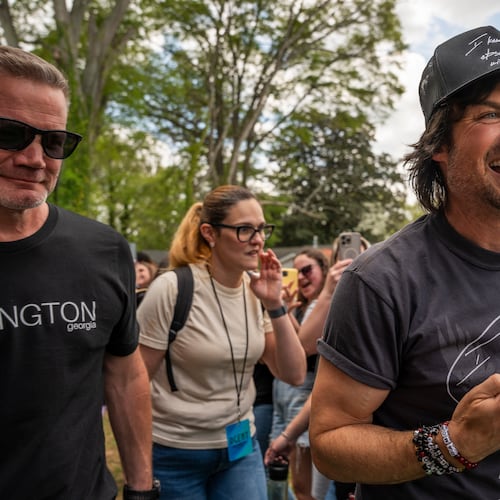How much do you know about the rainbow flag, the unifying symbol of pride used by the LGBTQ community?
You likely will see the rainbow flag more often in June, which is Pride Month.
» Why is June designated Pride Month?
The flag was created by Gilbert Baker, a Vietnam veteran and drag queen in San Francisco.
In 1976, as the United States was celebrating its bicentennial, Baker noticed the American flag everywhere.
"And I thought, a flag is different than any other form of art. It's not a painting, it's not just cloth, it is not a just logo—it functions in so many different ways," Baker said in an interview with the Museum of Modern Art.
"I thought that we needed that kind of symbol, that we needed as a people something that everyone instantly understands."
» Photos of Atlanta's Gay Pride through the years
Baker continued: "It was necessary to have the Rainbow Flag because up until that we had the pink triangle from the Nazis—it was the symbol that they would use (to denote gay people). It came from such a horrible place of murder and holocaust and Hitler. We needed something beautiful, something from us."
Baker was encouraged by Harvey Milk, one of the first openly gay elected officials in the country.
"Our job as gay people was to come out, to be visible, to live in the truth as I say, to get out of the lie." Baker said. "A flag really fit that mission, because that's a way of proclaiming your visibility, or saying, 'This is who I am!' "
» Here are 6 of Atlanta's best gay-friendly neighborhoods
As a drag queen, Baker made his own clothes and, therefore, knew how to sew. Working with a group at the Gay Community Center, they dyed the fabric and sewed the flag.
The first rainbow flags were raised on June 25, 1978, in the United Nations Plaza in San Francisco.
The original flag had eight colors (from top to bottom):
- Hot pink for sexuality
- Red for life
- Orange for healing
- Yellow for sun
- Green for nature
- Turquoise for art
- Indigo for serenity/harmony
- Violet for spirit
Hot pink was not in the commercial manufacturer's color palette, however, so it was dropped.
When Milk was assassinated on Nov. 27, 1978, the gay community wanted to demonstrate its strength and unity using Baker's flag. The turquoise stripe was eliminated to create an even number, with half the colors lining one side of a parade route, and half on the other.
The indigo stripe was replaced with royal blue, resulting in the iconic flag used today.
About the Author
Keep Reading
The Latest
Featured



